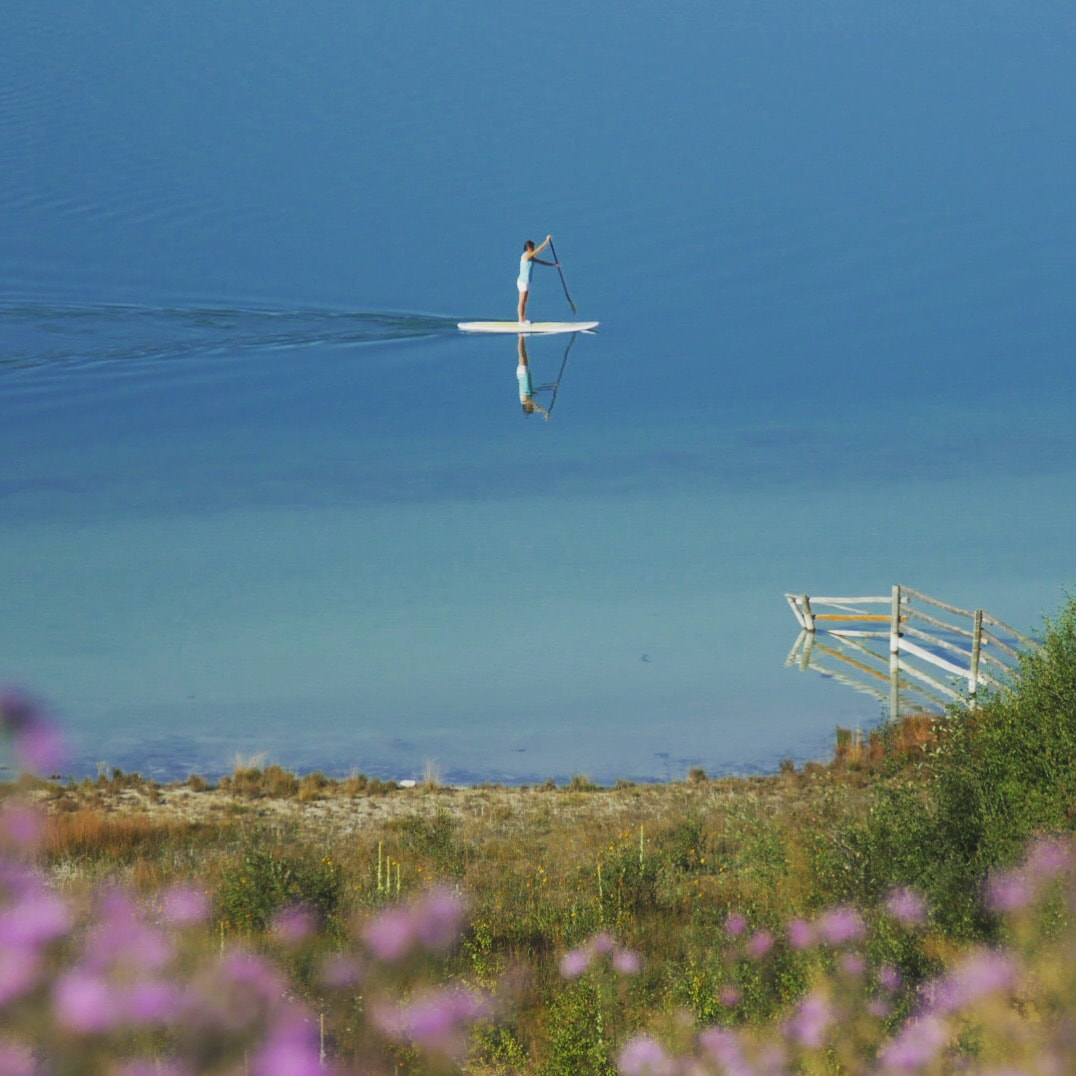What is stand up paddleboarding?
Stand up paddleboarding (SUP) is a water sport in which an individual stands on a board and uses a paddle to move through the water. The sport originated in Hawaii in the early 20th century, where it was used as a way for surfers to paddle out to waves. Today, it has become a popular activity for people of all ages and skill levels, as it can be enjoyed on various types of water, including oceans, lakes, rivers, and even rapids.
The board used for stand up paddleboarding is typically larger and wider than a traditional surfboard, providing more stability for the rider. The paddle is usually made of lightweight material such as carbon fiber or fiberglass, and is used to propel the rider through the water. The rider stands on the board with their feet parallel and about shoulder-width apart, and uses their core muscles to maintain balance.
Stand up paddleboarding can be done in a variety of ways, including recreational paddling, touring, racing, and even yoga and fitness classes. Recreational paddling is the most common form of the sport and is typically done on calm water, such as a lake or bay. Touring involves longer trips on open water, such as the ocean, and may include overnight camping trips. Racing involves competition against other paddlers, and can be done on various types of water, including flat water and waves. Yoga and fitness classes are also offered on stand up paddleboards, allowing individuals to work on their balance and core strength while enjoying the outdoors.
One of the benefits of stand up paddleboarding is that it is a low-impact, full-body workout. It engages the core, legs, arms, and back, and can improve balance, coordination, and endurance. It can also be a great way to explore the outdoors and enjoy the natural beauty of the water. Additionally, stand up paddleboarding can be enjoyed by people of all ages and skill levels.
Stand up paddleboarding is a relatively easy sport to learn, but like any water sport, it's important to be aware of the risks and take the necessary precautions. Always wear a life jacket, check the weather forecast and water conditions before heading out, and never paddle alone. It's also important to be aware of any local laws and regulations regarding stand up paddleboarding.
Overall, stand up paddleboarding is an enjoyable and active sport that can be enjoyed by people of all ages and skill levels. It offers a full-body workout and a unique way to explore the outdoors and enjoy the natural beauty of the water. With the proper precautions and safety measures, it can be a safe and enjoyable activity for everyone.
The board used for stand up paddleboarding is typically larger and wider than a traditional surfboard, providing more stability for the rider. The paddle is usually made of lightweight material such as carbon fiber or fiberglass, and is used to propel the rider through the water. The rider stands on the board with their feet parallel and about shoulder-width apart, and uses their core muscles to maintain balance.
Stand up paddleboarding can be done in a variety of ways, including recreational paddling, touring, racing, and even yoga and fitness classes. Recreational paddling is the most common form of the sport and is typically done on calm water, such as a lake or bay. Touring involves longer trips on open water, such as the ocean, and may include overnight camping trips. Racing involves competition against other paddlers, and can be done on various types of water, including flat water and waves. Yoga and fitness classes are also offered on stand up paddleboards, allowing individuals to work on their balance and core strength while enjoying the outdoors.
One of the benefits of stand up paddleboarding is that it is a low-impact, full-body workout. It engages the core, legs, arms, and back, and can improve balance, coordination, and endurance. It can also be a great way to explore the outdoors and enjoy the natural beauty of the water. Additionally, stand up paddleboarding can be enjoyed by people of all ages and skill levels.
Stand up paddleboarding is a relatively easy sport to learn, but like any water sport, it's important to be aware of the risks and take the necessary precautions. Always wear a life jacket, check the weather forecast and water conditions before heading out, and never paddle alone. It's also important to be aware of any local laws and regulations regarding stand up paddleboarding.
Overall, stand up paddleboarding is an enjoyable and active sport that can be enjoyed by people of all ages and skill levels. It offers a full-body workout and a unique way to explore the outdoors and enjoy the natural beauty of the water. With the proper precautions and safety measures, it can be a safe and enjoyable activity for everyone.






